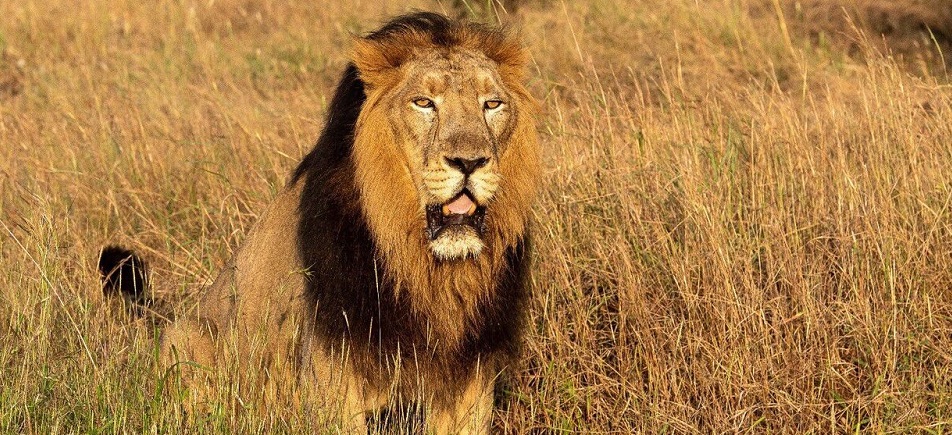The Gir National Park and Wildlife Sanctuary, also known as Sasan Gir is a renowned wildlife sanctuary and forest situated in Talala Gir, Gujarat, India. This sanctuary is uniquely significant as it serves as the only known habitat of the Asiatic Lion making it a critical area for preservation efforts.
History of the Gir National Park
The region where Gir National Park is located has been inhabited for centuries with evidence of human settlements dating back to ancient times. The area was traditionally used for hunting by local communities and later by Indian royalty. By the early 20th century, the Asiatic lion population had dwindled drastically, with reports suggesting that there were as few as 20 lions left in the wild. This alarming decline prompted the Nawab of Junagadh, Nawab Rasulkhanji, to take action. The government of India recognized the critical need to protect the Gir forest and its lion population. Consequently, Gir was declared a wildlife sanctuary in 1965, covering an area of approximately 258 square kilometers. Further recognizing the importance of the area, the government established the Gir National Park within the sanctuary in 1975, with an area of about 141 square kilometers. Continuous efforts by the Gujarat Forest Department, wildlife organizations, and local communities have contributed to a steady increase in the lion population. The park has also become a major center for wildlife research and eco-tourism.
Asiatic Lion Population in Gir National Park
By the early 1900s, the Asiatic lion population had plummeted to around 20 individuals due to excessive hunting and habitat loss. This drastic decline triggered the first conservation actions by Nawab Rasulkhanji of Junagadh. In 1965, Gir was declared a wildlife sanctuary and in 1975, the core area was designated as a national park. These steps provided a protected habitat for the lions, aiding in their gradual recovery. Continuous efforts throughout the latter half of the century, including strict anti-poaching measures and habitat management, resulted in a steady increase in the lion population. The 2015 census reported a significant rise in the lion population, counting approximately 523 individuals in the Gir Forest and surrounding areas. This represented a 27% increase from the previous census in 2010. The 2020 census revealed further growth, estimating the population at around 674 lions. This increase was attributed to effective conservation strategies, improved habitat conditions, and community involvement. As of the most recent data, the population of Asiatic lions in and around Gir National Park is over 600 individuals. This marks a significant recovery from their near-extinction status in the early 20th century. The lion population is not confined solely to the Gir National Park. It has expanded to neighboring areas, including Girnar, Mitiyala and Pania wildlife sanctuaries as well as other parts of Gujarat. This wider distribution helps mitigate the risks associated with having a concentrated population in a single area.
How to Explore the Deep Wilderness of Sasan Gir
Exploring the deep wilderness of Sasan Gir, the Gir National Park and Wildlife Sanctuary offers an incredible opportunity to experience the natural habitat of the Asiatic lion and other diverse wildlife. The park is open from mid-October to mid-June with the best time for wildlife sightings being from December to April when the weather is pleasant and animals are more active. Obtain entry permits online through our official website or at the park’s entry points. Booking in advance is recommended due to limited slots for safaris. We also provide complete Gir Jungle Safari Tour Packages for family vacation. Jeep safaris are the most popular way to explore Gir. They are conducted in the early morning and late afternoon. Each safari lasts about 3 hours and is accompanied by a trained guide who provides insights into the park’s flora and fauna. Ensure you follow the park rules and guidelines during the safari.

